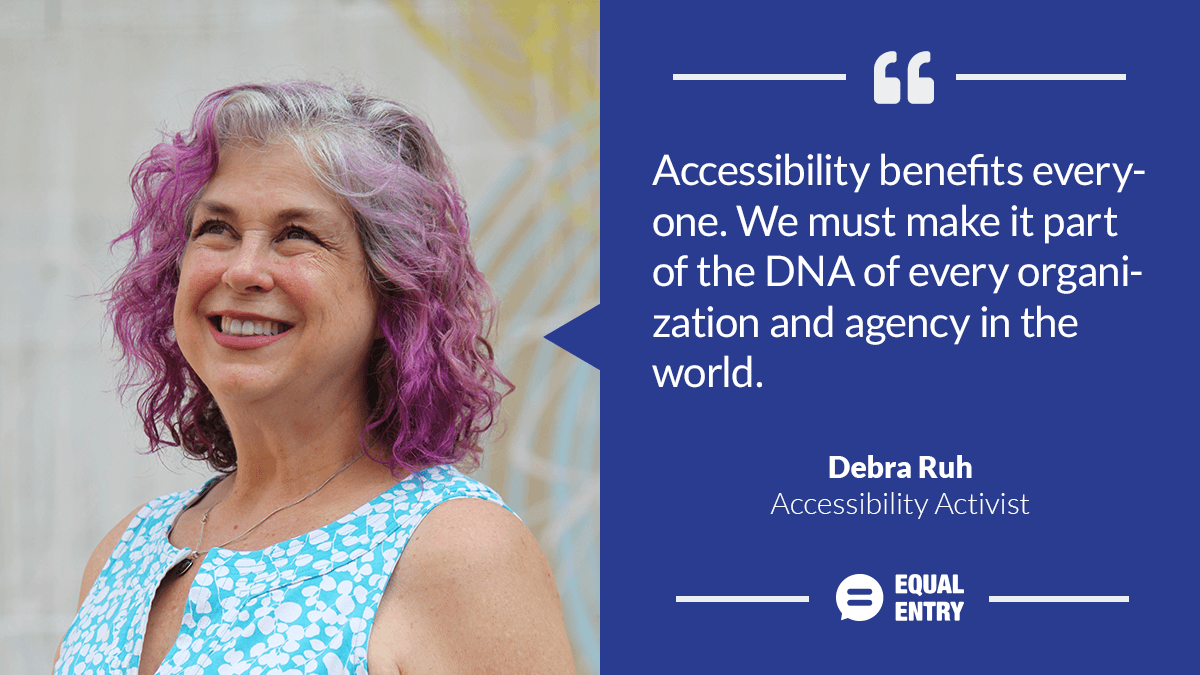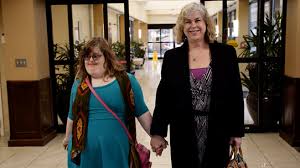Summary

Debra Ruh is a Global Disability Inclusion Strategist, Market Influencer, internationally recognized keynote speaker, published author, branding expert, successful entrepreneur, and an exceptional mother. She is the CEO and Founder of Ruh Global IMPACT, a strategic consulting firm that specializes in disability inclusion and accessibility.
How did you get your start in accessibility?
I started in 2001. I wanted to create a tech firm that employed persons with disabilities. My inspiration was my daughter Sara, who was born with Down syndrome. When she was in middle school, we were told she would never add value to the workforce. I was shocked and determined to prove them wrong. At the time I was a technologist working in the banking and financial arena at an executive level. I decided to create a technology company that believed in the value of hiring persons with disabilities. We started as Strategic Performance Solutions (SPS) and we offered web design services. A few months later we learned about Section 508 of the Rehab Act of 1973. I thought, who is better to tell you if your website is accessible than persons with disabilities, especially PwD using assistive technologies? We trained ourselves to be accessibility experts and renamed the company to TecAccess. I grew TecAccess into a multi-million dollar business, but we always struggled with cash flow.

When the financial and housing markets of 2009 hit, the Virginia bank we banked with crashed because more of their assets were in housing. Federal regulators were called in. I lost my line of credit because the bank was no longer a business at this point. I had no choice but to merge with another accessibility firm in the field to protect my employees. Many people including my family lost a lot of money. Tough times, but it allowed me to protect my employees with disabilities. I stayed with that firm for 18 months and then created Ruh Global IMPACT. Our focus is not only on accessibility, but I tell our clients if you are not accessible, you do not want to work with us. We help our clients tell their disability inclusion stories, but if you are not accessible, you are not supporting our community. So accessibility is key to inclusion.
A few years ago, you started the Human Potential at Work podcast. What was your inspiration in joining the podcast world and who is your ideal audience?
I had been a guest on many other shows and podcasts. However, I was not seeing enough good content about accessibility, disability inclusion, tech4good, tech4all, corporate social responsibility and stories that focused on what makes us human. So I decided to create Human Potential at Work. The show is now over 4 years old, with over 200 episodes, audiences in over 86 countries and great guests.
My ideal audience is anyone that cares about disability inclusion and accessibility. However, many corporate brands, especially global brands, watch the show. I also assure the show is always captioned and transcribed to promote accessibility. It is an added expense, but we must all walk the walk. I also have many persons with disabilities, United Nations personnel, Disability Persons Organizations (DPOs), and nonprofits listen and contribute to the show. It is a commitment to do the show every week, but I love the guests and content.
For the past several years, you along with your partners Neil Milliken and Antonio Santos have been the driving force behind #AXSChat, an open online community of individuals dedicated to creating an inclusive world. What makes social media a powerful platform in raising awareness about accessibility and inclusion?
AXSChat was created over 5 years ago in December 2014 with Neil Milliken and Antonio Santos of Atos. We all believed that social media was a wonderful way to break down barriers and champion accessibility, disability inclusion and inclusive design. We are one of the oldest and most successful tweet chats in the world with over 8 billion tweets since we began. AXSChat also has a robust global community of accessibility and disability inclusion advocates. Since that time, many other important voices have joined us on social media. This is the way that we communicate so social media is essential to our community. We are also active on other social media outlets like YouTube, Facebook, Instagram and other platforms.
What is an accessibility barrier you would like to see solved?
I would like to see accessibility as a normal part of the development life cycle instead of always an afterthought. Even firms that have focused on accessibility often forget to blend it into their ongoing development life cycle. We have all spent so much time preaching about why accessibility benefits everyone. At this moment, the world is being gripped by the coronavirus disease COVID-19. Everyone is home teleworking and the accessibility problems are causing major productivity issues. Accessibility benefits everyone. We must make it part of the DNA of every organization and agency in the world. Digital inclusion is a huge part of the growing digital divide.
I also believe we all need to focus on implementing the 17 goals of the United Nations’ Sustainable Development Goals (SDGs). 11 of those goals touch persons with disabilities. Developing and developed countries alike need to care about the planet, people and other inhabitants. I also believe that climate action is critical during a time of great climate change and sadly persons with disabilities are at greater risks to climate change. People deserve to have access to ICT and all environments. We have to reduce the digital divide and the built barriers. Everyone matters.